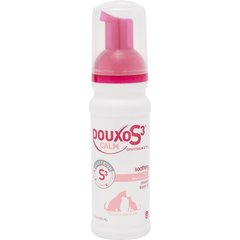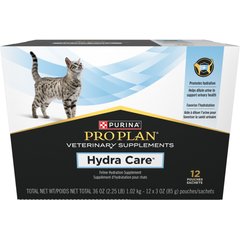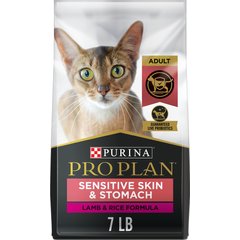When to Euthanize a Cat With Kidney Disease
Thai Liang Lim/E+ via Getty Images
When your senior cat was diagnosed with chronic kidney disease (CKD), you may have felt worried, confused, and overwhelmed. Having a thorough discussion with a veterinarian can help you understand what to expect in the coming weeks and months after diagnosis.
It’s important to understand that a CKD diagnosis doesn’t mean humane euthanasia is needed.
Let’s look at how to evaluate your cat’s quality of life and what question to ask your veterinarian.
What Is Chronic Kidney Disease (CKD) in Cats?
The kidneys act like a recycling plant for the body. They sort through the blood as it passes through them and return useful items to the bloodstream while placing waste items into the urine to be eliminated.
Veterinarians diagnose CKD when they see that the kidneys are not functioning properly.
The kidneys fail to remove waste products from the cat’s bloodstream, do not maintain potassium and sodium balance in the body, and produce abnormal amounts of urine when they do not work effectively.
Symptoms develop slowly and progressively worsen if left untreated.
There may be more urine clumps than usual in the litter box, or your pet may have a smaller appetite and lose weight.
Some cats have vomiting and/or diarrhea. Cats can have various symptoms, but the diagnosis is usually clear when veterinarians look at laboratory tests.
A system called IRIS (International Renal Interest Society) staging helps determine the options and prognosis for each stage of chronic kidney disease in cats.
Discuss IRIS staging with your veterinarian and talk over all options so you can get a good idea of your cat’s current condition and what to expect.
Vet Recommended Health Support
- Douxo S3 CALM Soothing Itchy, Hydrated Skin Dog & Cat Mousse, 5.1-fl oz bottle$24.68Chewy Price
- Purina Pro Plan Veterinary Diets FortiFlora Powder Probiotic Digestive Supplement for Cats, 30 count$30.99Chewy Price
- Purina Pro Plan Veterinary Diets Hydra Care Liver Flavored Liquid Supplement for Cats, 3-oz pouch, case of 12$14.99Chewy Price
- Purina Pro Plan Adult Sensitive Skin & Stomach Lamb & Rice Formula Dry Cat Food, 7-lb bag$28.08Chewy Price
Cat Kidney Disease Stages
Kidney disease in cats is separated into four stages, which include the following:
-
Stage one: This is the earliest form of kidney disease. Creatinine (a waste product that is normally filtered by the kidneys) and BUN (blood urea nitrogen) are still normal.
-
Cats lose their ability to concentrate their urine so it is very dilute and may contain protein. Other symptoms may not be present yet. Pet parents should closely monitor their pets for new symptoms.
-
-
Stage two: Cats have mildly increased creatinine and BUN with mild symptoms. Some cats have high blood pressure.
-
Cats should be monitored closely to slow progression of disease. Average survival after diagnosis is 1151 days. Pet parents should discuss any new symptoms that have developed promptly with a veterinarian.
-
-
Stage three: Creatinine and BUN are moderately increased. Cats generally have multiple symptoms, and average survival is 679 days following diagnosis.
-
Pet parents should ensure their cats are receiving prescribed medications correctly and attending follow ups with a veterinarian to monitor CKD progression.
-
-
Stage four: Cats have severely high levels of creatinine and BUN with numerous symptoms. This is considered end stage kidney disease since the majority of the kidneys are not functioning.
-
Average survival is 35 days after diagnosis. Pet parents should watch for worsening of symptoms and a decline in quality of life.
-
How Long Can a Cat Live With Kidney Disease?
The life expectancy for cats diagnosed with chronic kidney disease varies dramatically, depending on the stage and what treatment options you select.
If you are committed to treating your cat and they’re in the early stages of the disease, they could live for approximately three years with CKD.
Another major factor in determining life expectancy is whether your cat is otherwise healthy or has some complications with other organs.
Older animals with multiple diseases often do not live as long, but with consistent and careful care, even these cats can live two to three years or more.
It’s common for older cats to have CKD in combination with an overactive thyroid or hypertension. Neither of these diseases are immediately fatal, but they do mean that there are more challenges to address to get your cat stable and happy again.
Those diagnosed in the advanced stages of CKD or living in situations where treatment is not possible generally do not live long—typically weeks to months.
Address all the options for treatment as soon as possible after diagnosis. This is the time when your cat needs the most aggressive treatment.
How To Know When to Euthanize a Cat With Kidney Disease
Knowing when to let a cat with CKD go is difficult, especially if they have gone through treatment. Sometimes pet parents can suffer from caretaker’s fatigue and the outlook appears impossible, so a fresh perspective is needed.
Perhaps a family member or friend visits and is shocked at how much your cat has changed or the level of care you need to provide, and it causes you to second-guess your decision.
As hard as it is, the best—and maybe easiest—way to make decisions is often to look at the world through the eyes of your cat.
In other words, evaluate your cat’s quality of life, or QOL.
In human medicine, we can easily consult with the patient in most cases to determine what is or isn’t working about a treatment protocol and adjust accordingly. That is certainly more challenging when we need to rely on nonverbal cues from a cat’s body language and behavior.
Evaluating Your Cat’s Quality of Life
The simplest and most basic question comes down to enjoyment.
Ask yourself:
-
Is your cat still enjoying life on average, although some will be good days and bad days?
-
Do they still enjoy their food, even though they might be picky?
-
How about a long nap in the sun or a chin scratch on your lap—are these things still pleasurable for your cat?
It helps to create a list of things that your pet usually enjoys, and then use a calendar to rank each day on a scale of one to 10. You could give each thing a ranking from one to 10, then add up the rankings and take the average to get an overall ranking for the day.
This allows you spot trends. If the days are trending from seven to 10, your cat is probably still pretty happy. If they’ve dropped into the five to seven range, things are becoming questionable. And if the days are ranking below a five, you may have some hard decisions to face.
Here are some specific questions to consider:
Appetite: Be mindful of changes in your cat’s appetite.
-
Is your cat eating enough to maintain a stable weight?
-
Do they still enjoy eating, even if they may be picky?
-
When you break out the “good stuff,” like some roast beef or a can of tuna, does that spark some interest?
Attitude: Pay attention to your cat’s daily routine, attitude, and behaviors.
-
Has your cat’s behavior changed recently?
-
Does your cat still enjoy human interaction?
-
Is your cat sleeping more or seem lethargic throughout the day?
Medications: Consider ease of administering medications.
-
Is your cat still taking the right dosages of medications?
-
Are you able to administer medications as prescribed?
If you notice your cat’s quality of life declining despite treatment, it’s time to consider humane euthanasia.
Palliative Care, Hospice, or Euthanasia for Cats With CKD
When your cat is diagnosed with CKD, your instinct may be to think that it’s time to let them go. But once you sit back and look at your options, it becomes evident that you do have some choices based on how far along the disease is.
Let’s look at some options when dealing with a CKD diagnosis in cats.
Palliative Care Stage
Immediately after diagnosis, most cats with mild to moderate kidney disease will start palliative care. During the palliative stage, the goal is to slow progression of disease and reduce symptoms in affected cats using medications.
Pet parents should choose this stage in consultation with a veterinarian if they are able to administer medications at home and if they are willing to bring the cat in for frequent follow up visits.
Hospice Stage
As the disease progresses and the options become more limited, you start to enter the hospice stage. The primary goal of this stage is maximizing your cat’s quality of life.
Pet parents should consider hospice care if the cat’s quality of life is declining. This may include not eating and drinking, vomiting regularly, or becoming extremely lethargic.
Euthanasia Decision
When a cat’s quality of life has declined significantly and he is no longer comfortable despite best efforts, it is time to consider euthanasia. Many of us feel guilt or uncertainty about making the decision.
However, having a thorough discussion with your pet’s veterinarian about this choice to understand the process can make this decision more manageable. The main goal of euthanasia is to alleviate suffering and give pets a peaceful passing.




